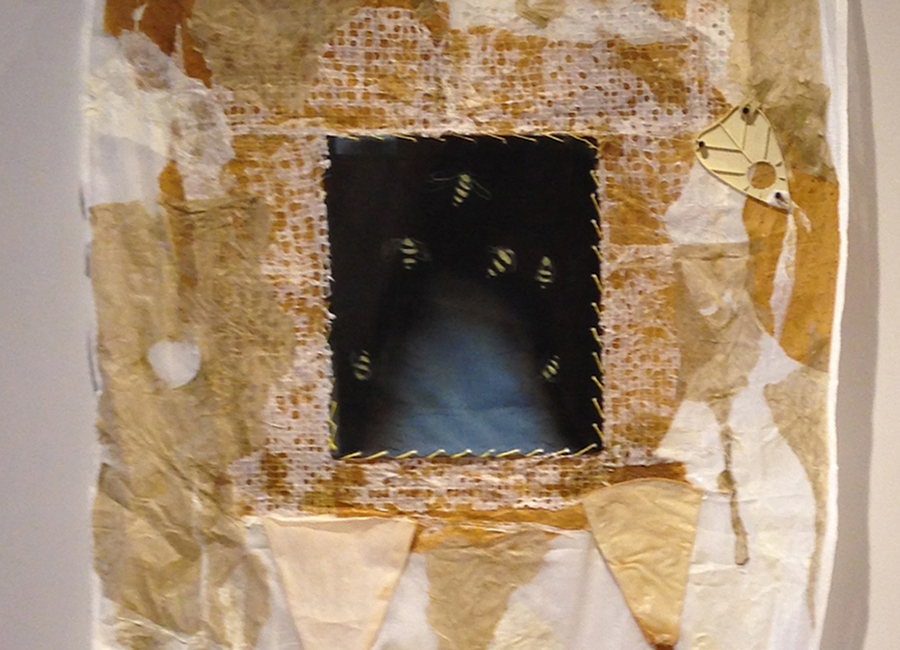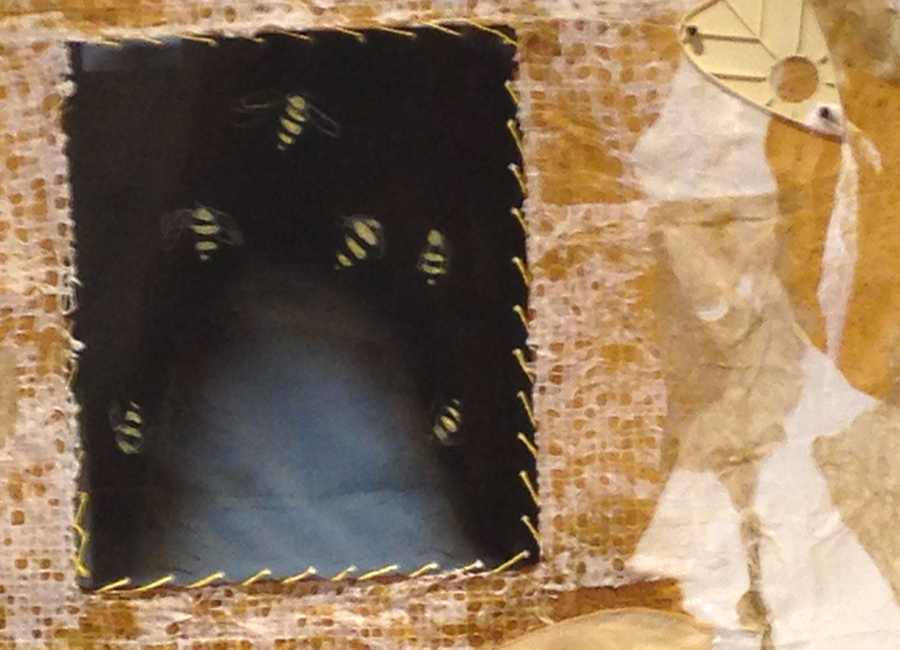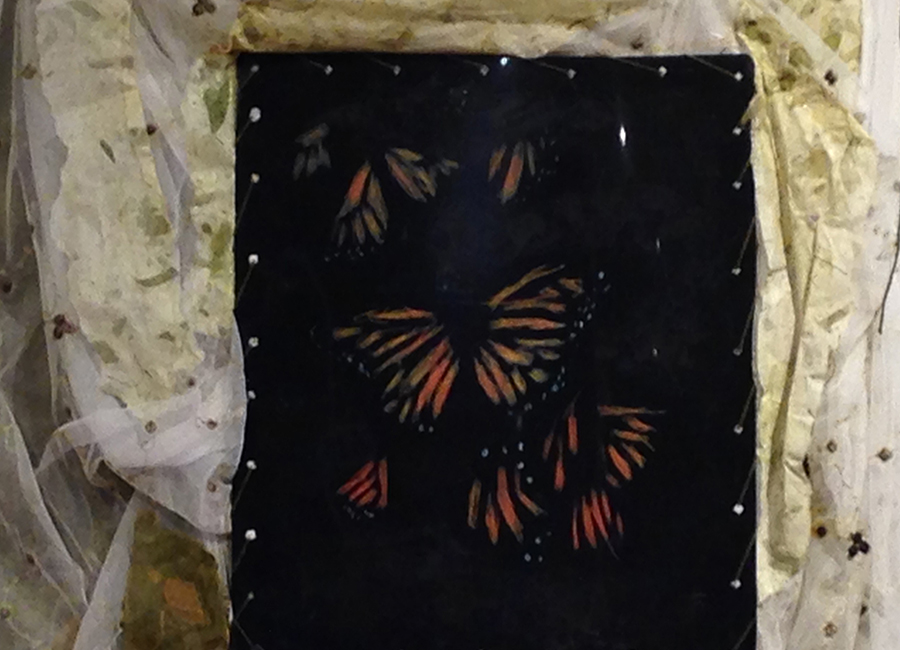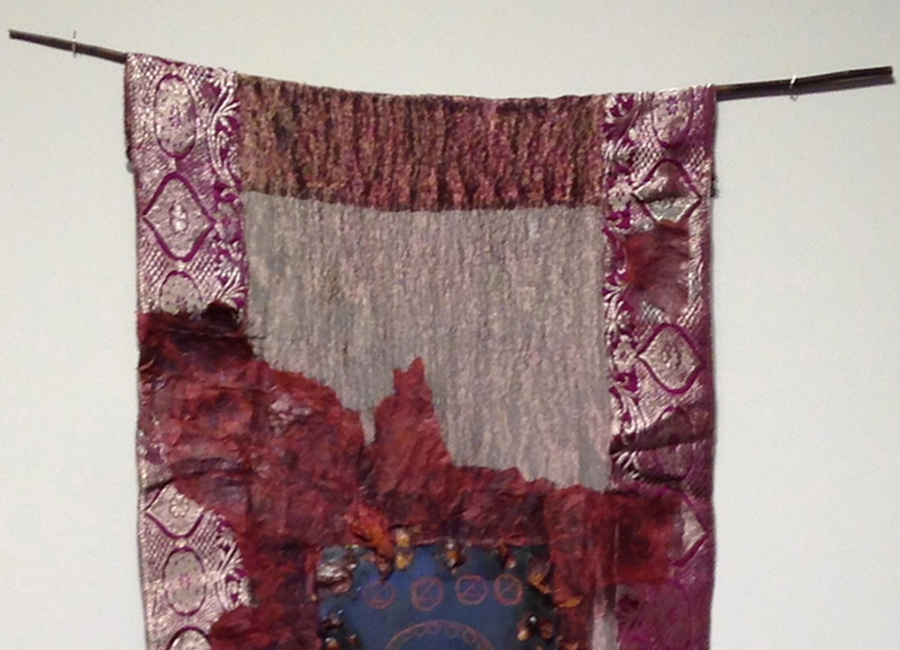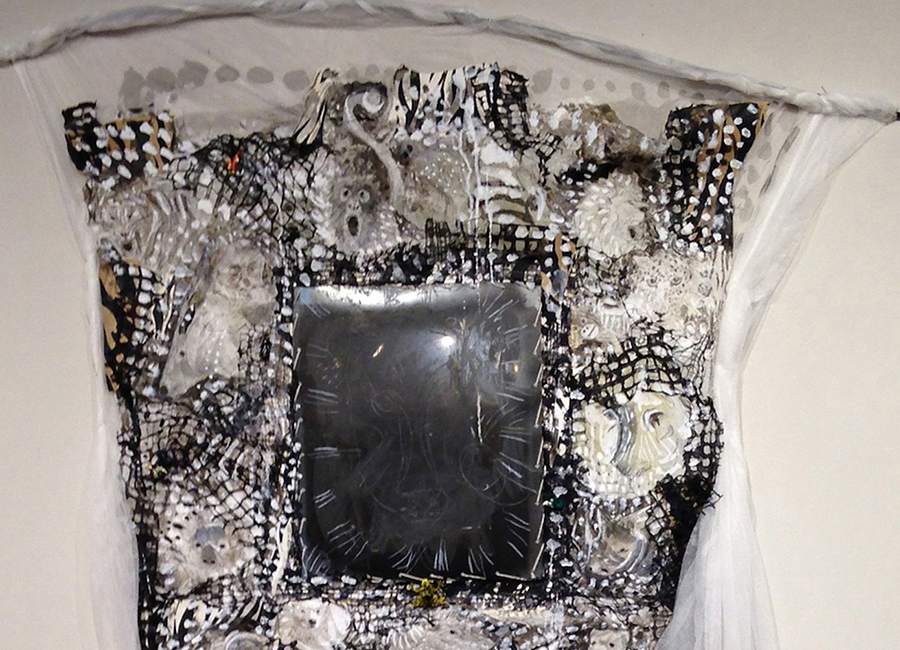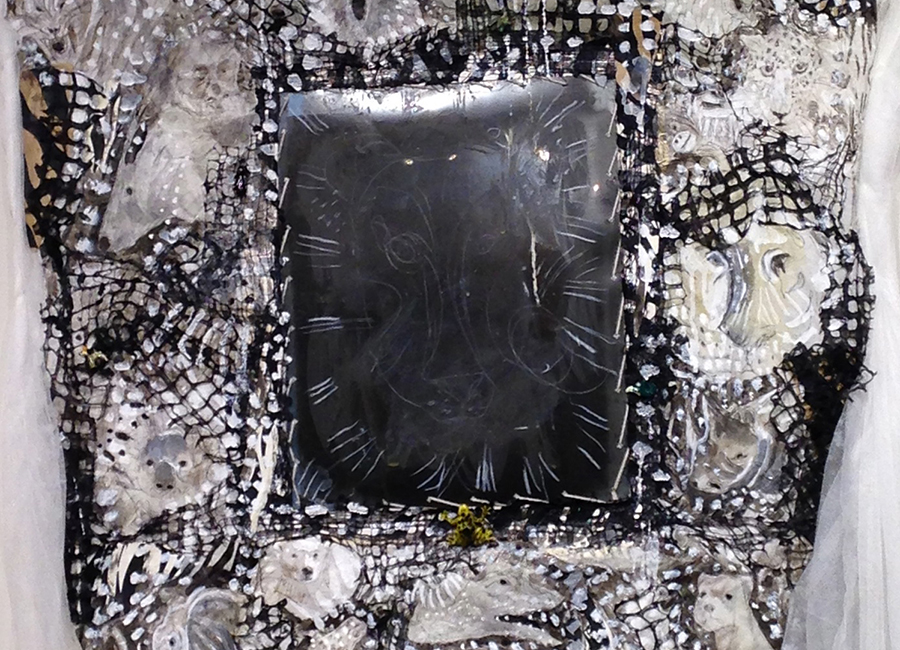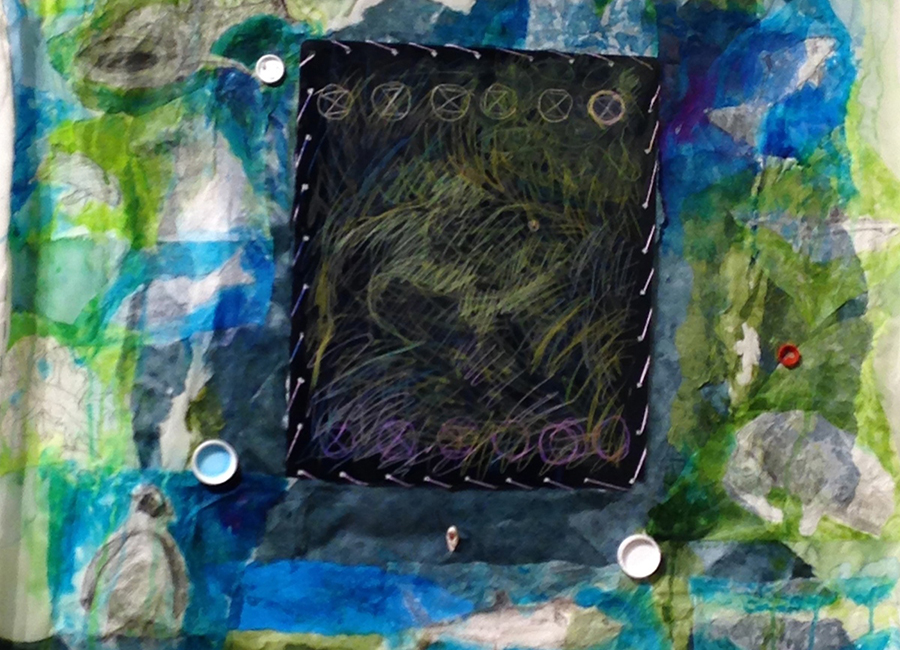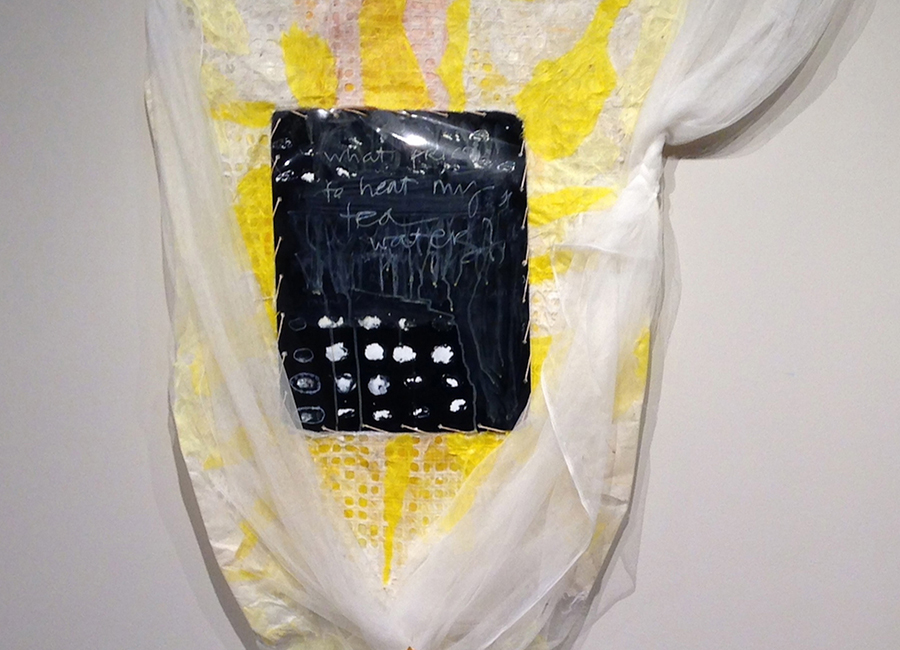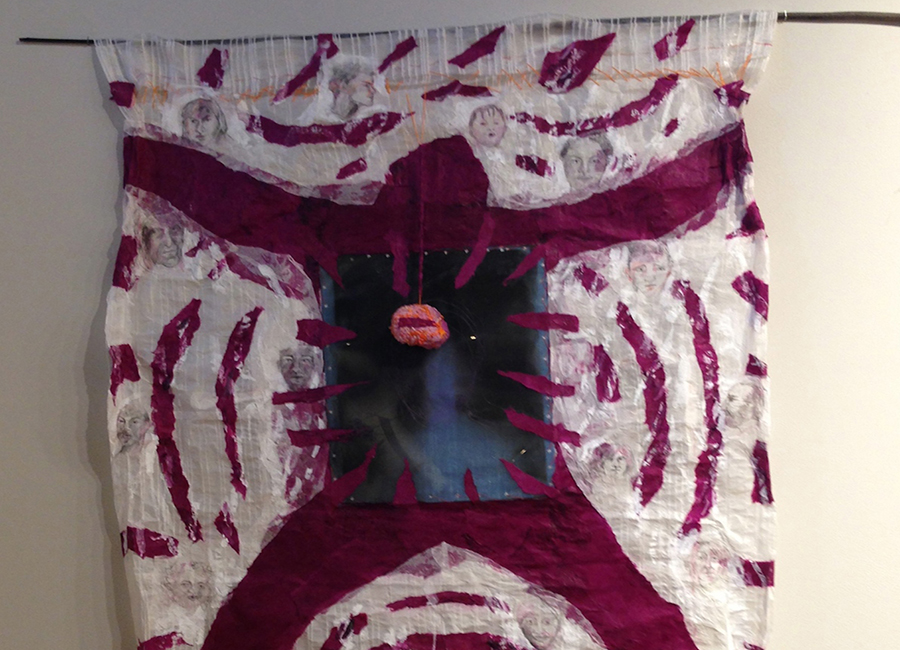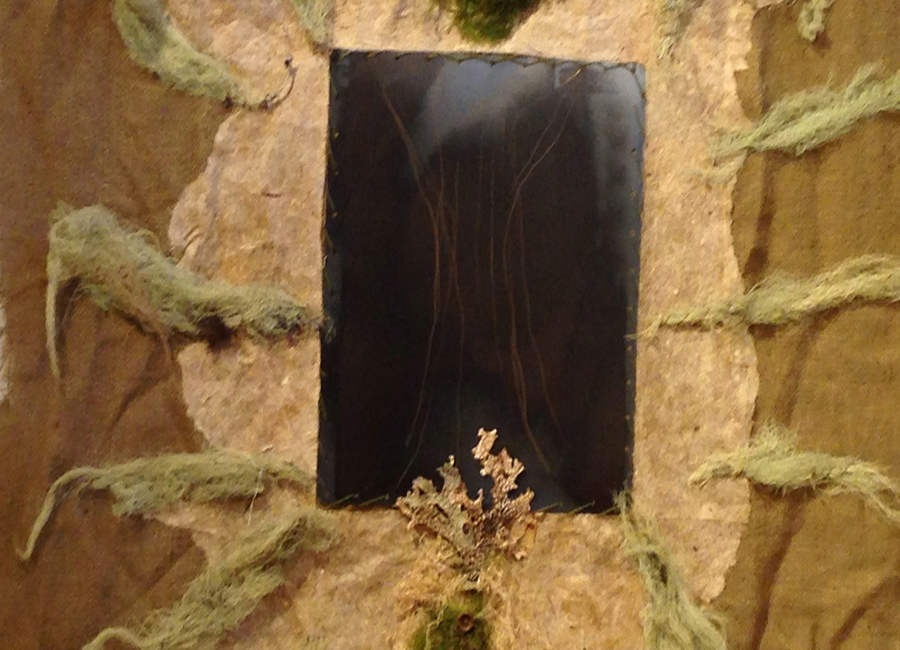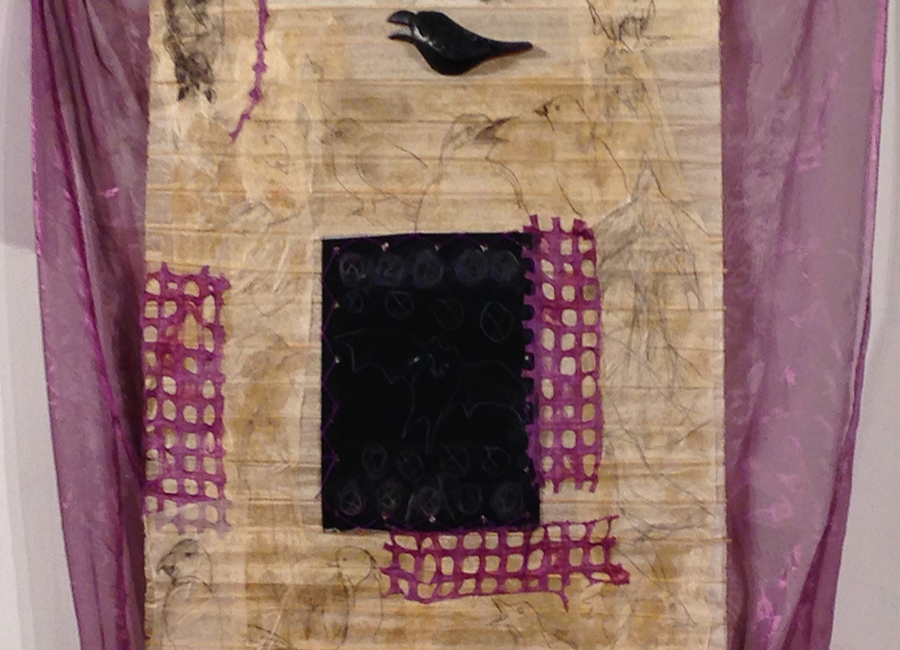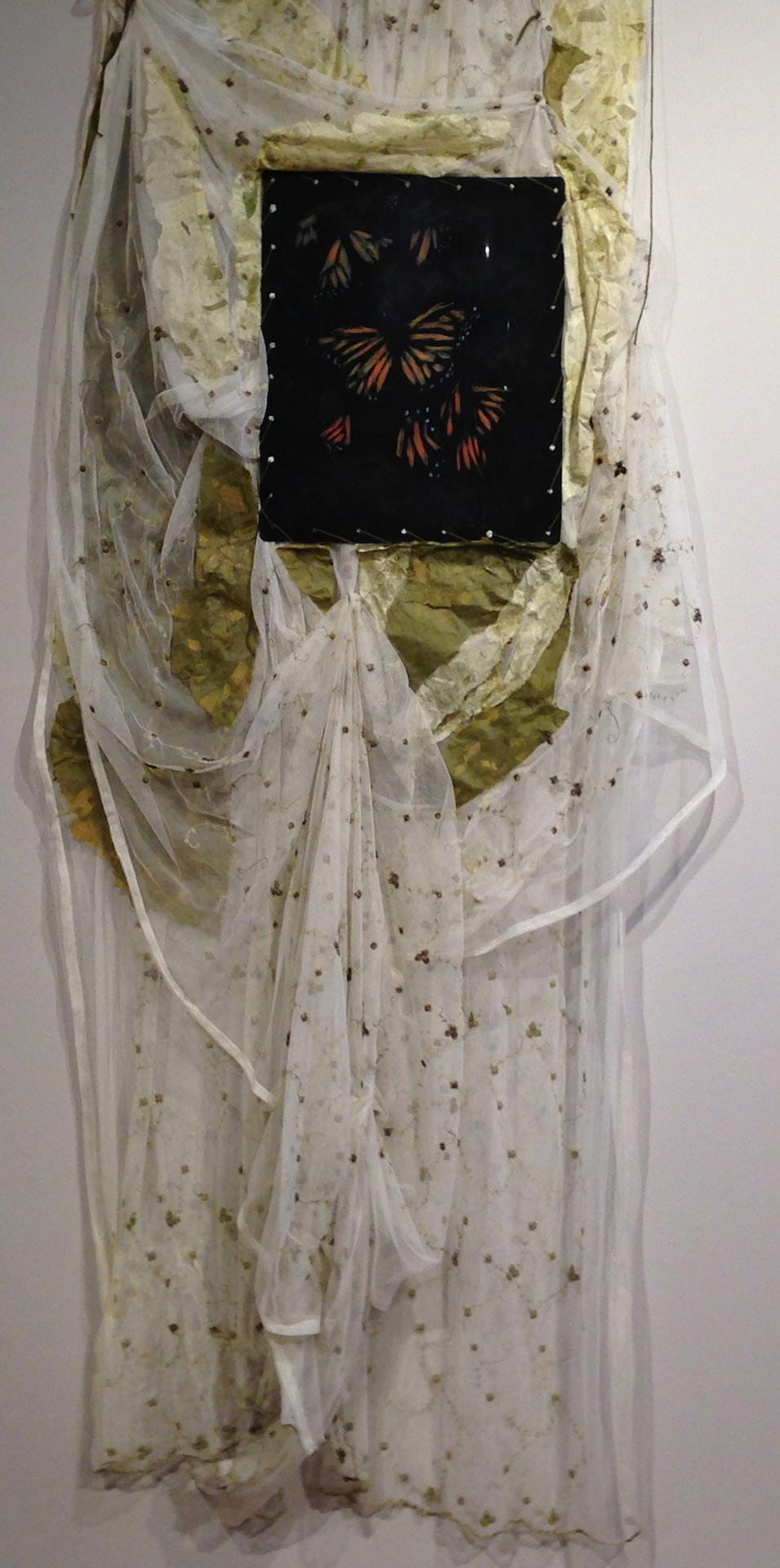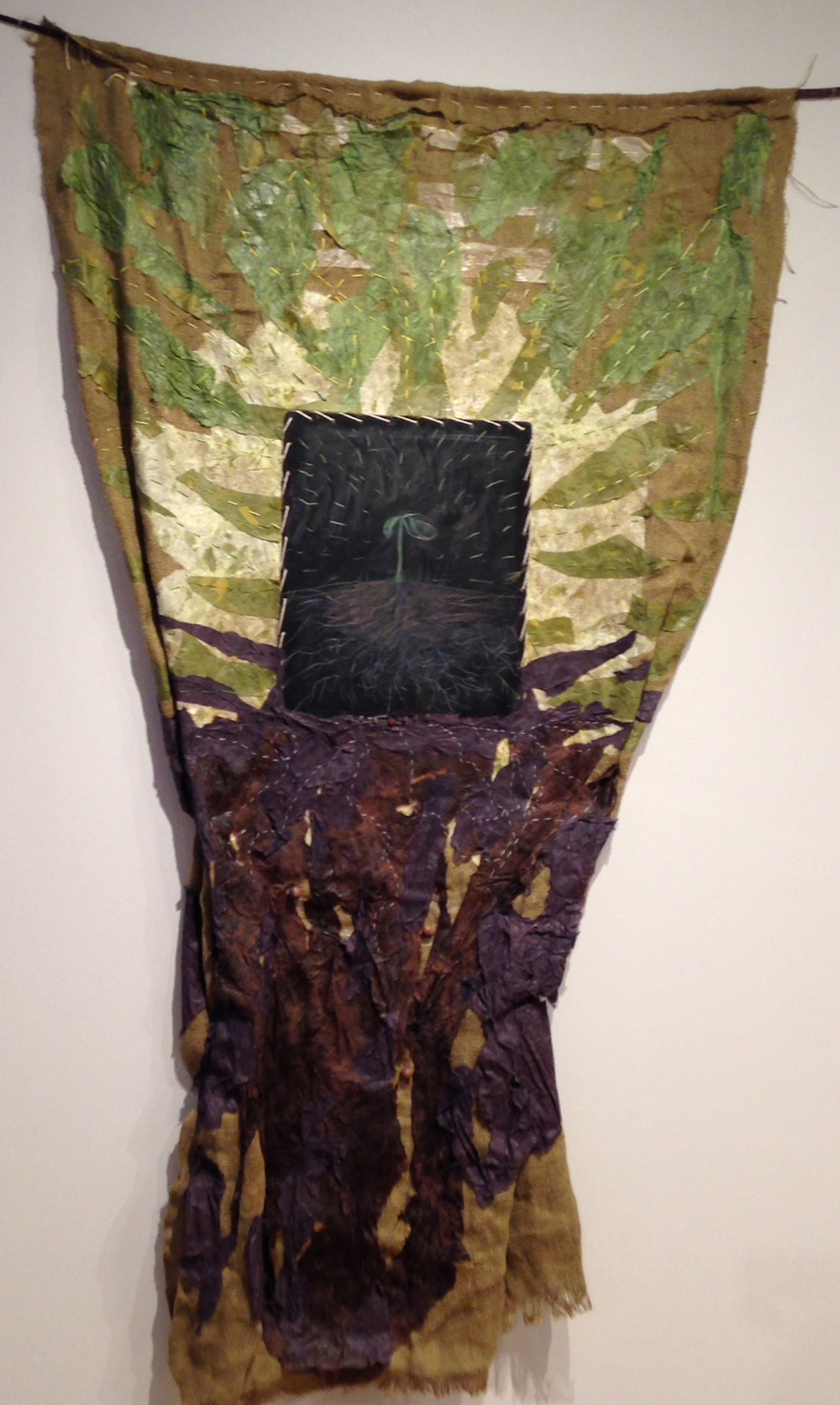“Curtain Call: Portable Altars for Grief and Gratitude,”
A series of 12 wall hangings, mixed media, variable sizes ranging from 12”x36” to 4’x8’, 2014.
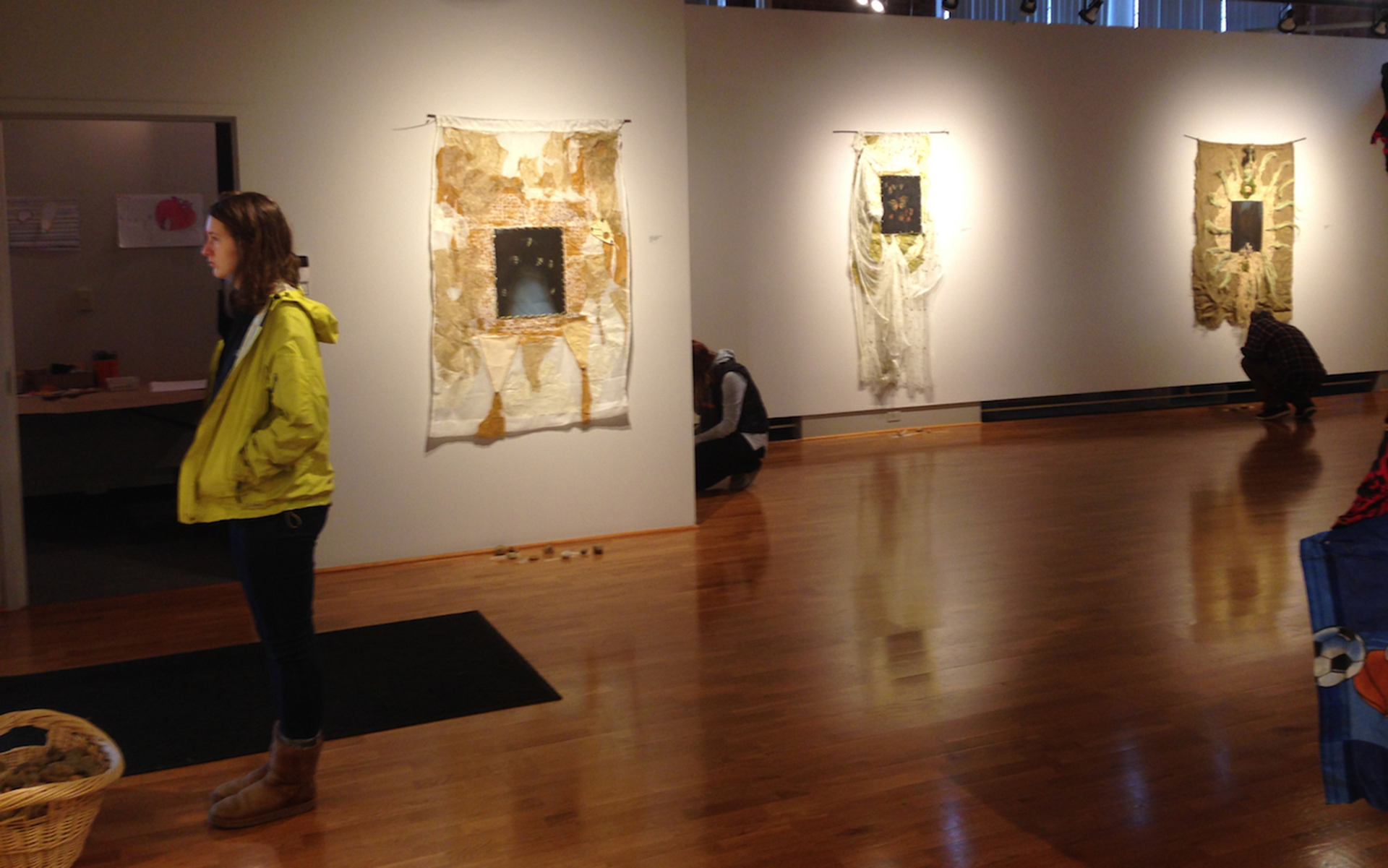
Curtain Call: Portable Altars for Grief and Gratitude is a series of 12 cloth/paper hangings that can hang on walls or in between trees. Each one focuses on a different endangered creature or element, from honey bees to old growth trees and clean air, and allows visitors to express their grief and gratitude in relation to each one. Consistent to all 12 is a central Xray image of the artist’s spine and other parts of her interior. Exhibited at the Karl Drerup Gallery at Plymouth University, NH in 2014.
ARTIST’s STATEMENT for Curtain Call: Portable Altars for Grief and Gratitude
Karl Drerup Gallery, Plymouth State University, New Hampshire October 2014
When I moved to the Pacific Northwest over a decade ago, I found that locals, when they learned that I was an artist, would invariably ask me “what’s your medium?” I have found this question frequently challenging, because I don’t identify with a medium. I often feel obliged to explain the genre of contemporary art that is content-based rather than form-based. While there are many artists who perfect their craft in one medium and I greatly respect that expertise, mastering a medium has not motivated my creative process.
Instead, I work with ideas and scavenge the materials necessary to make what I need to say. I do “contact improvisation” with words, materials and feelings, letting the weight shift, allowing unexpected forms of balance to occur. I may know that I need to say something about X, but the way to get there is mostly unknown, and the process can often be littered with false starts.
This past summer (2014) knew that I wanted to make a series of altars about extinction. My heart was breaking and I needed to find a way to process what I understood was happening to the world and its species. I wanted to make a series that would roll up and be easy to carry from place to place. I looked around my studio and felt an impulse to work with used curtains and burlap, old x-rays, branches, thread, tracing paper and matte medium. I was clueless about how they were going to merge into something compelling to look at. So I started with something skeletal. I sewed each piece of cloth onto a branch. I punched holes into the edges of the x-rays and then proceeded to sew them into a central space in each curtain. I was thinking about Tibetan Thangkas as devotional images, but I decided not to be literal, and didn’t really mimic the form. This was a journey into something I could not yet visualize, and it lead to many ripped out threads and royal failures before things began to gel.
At some point I realized that I did not want to fill my studio or any public space with dystopic images. For years I have understood that voicing my despair may be therapeutic for me, but it rarely activates others in powerful ways. So I encouraged myself to make beauty that speaks about this precious moment, a beauty that expresses my gratitude for the sweet, imperfect contradictions in this life. In other words, when I began to open to the suffering, the grief of losing so much, somehow I found that beauty emerged.
I started listening to Joanna Macy (one of my early teachers) while I worked. In her talks and her writings she discusses the “Great Turning” and what might be necessary to shift our world into one that is concerned about future generations. She talks about the legacy we are leaving the future beings and she does it in a way that resonates deeply. I began to meditate on those generations to come, the ones that will be contending with a radioactive planet with fewer species and less access to clean water, clean air, topsoil, healthy food, shelter and any sort of well being. As I was stitching, I allowed images to dance, like hidden energy behind each curtain; images of people connecting through their pain to morph into vast networks of people educating each other, finding new tools for creating a just & healed planet, bubbling and juicy with diversity, fertility and possibility. I imagined people all over the planet turning their shared grief and gratitude into a resonant and luscious chorus that cannot be silenced until the shift occurs.
The twelve hanging altars were birthed almost simultaneously, in the sense that I worked on them all at the same time. The first to appear complete was in honor of honeybees, and then monarch butterflies arrived. Over the course of three months, altars to honor old growth trees, clean water, indigenous cultures, clean air, creatures of the land, the winged ones, clean energy, creatures of the sea, fertile soil and human beings emerged. Although there is so much more to mourn and experience with gratitude, I felt complete with this chapter.
When the altars are on display, the audience has an opportunity to share stories of their own grief and gratitude on a piece of tracing paper. A basket of small stones sits nearby. Contributors leave their “trace” under a stone at the foot of each wall hanging/altar. Visitors can read the contributions of others, each person bending down and moving stones as they do this.
As Alice Walker says, "For we can do nothing substantial toward changing our course on the planet, a destructive one, without rousing ourselves, individual by individual, and bringing our small, imperfect stones to the pile."
